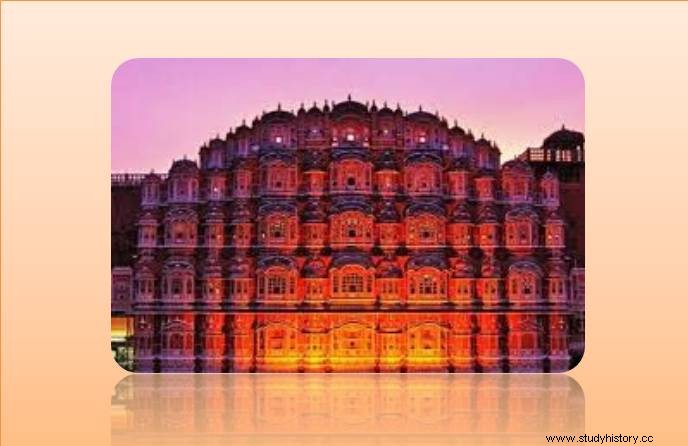
The Mughal emperor Bahadur Shah had deprived Jai Singh of the rights of Amer state and made him a vassal of Dausa only, but Jai Singh with the help of Mewar and Marwar kings defeated his brother and his supporting Mughal officials and recaptured Amer. Gradually, his influence in the Mughal court increased and with that the Amer kingdom also expanded. Bhangarh in 1714 AD, Malerna and Amarsar in 1716-17 AD, followed by Jhale, Uniara, Barbar and Narayana joined his kingdom. He took the 51 parganas of Shekhawati from the Kaamkhanis for 25 lakh rupees. All these were later merged into the state of Jaipur. The Shekhawat chieftains got mansabs in the Mughal service. Khandela's hideout in the Shekhawati region was very powerful. After taking possession of Khandela, Sawai Jai Singh divided it into two brothers with a view to making it weak. In 1729, the Pargana of Rampura was merged with Udaipur in the name of Madho Singh. Thus, the expansion of Amer kingdom reached its zenith during the time of Jai Singh.
Revenue of Jaipur State
At the time when Jai Singh became the king of Amer State, the annual income of Amer State was Rs 5 lakh. At the time of Jai Singh, the income of the state of Amer became Rs 1 crore. Rs 48,350 from Pargana of Bhangarh, Rs 3,33,273 from Pargana of Malarna, Rs 80 thousand from Pargana of Amarsar, Rs 2.5 lakh from Jhilai, Uniara and Barwara, Rs 80,413 from Naraina Pargana and Sarkar (district) of Amarsar, Rs 27,525 from Manoharpura Pargana There was an income of Rs. On 31 January 1727, the income of Jai Singh's Jagirs of Amarsar, Narayana and Manoharpur increased to Rs 2,30,030. From 20 August 1728, Jai Singh also started getting income of Rs 12,500 from Amarsar pargana. In lieu of the 51 parganas that were snatched from the Qam Khan of Jhunjhunu, Jai Singh used to deposit 25 lakh rupees in the treasury of the Mughals as an annual enzara.
Jaipur State Army
Initially, Jai Singh's army was very small, which later increased a lot. According to Jadunath Sarkar, Jaisingh's regular army never exceeded 40 thousand soldiers, whose annual expenditure was 60 lakh rupees per annum. His real strength was in his artillery. He gave more priority to the gunmen in his army than the Rajput soldiers with traditional swords and shields. He paid special attention to the supply of war material to the army. Because of this he was always ready for war. After taking over the Shekhawati region, Jai Singh had no shortage of strong soldiers. Later on Tipu Sultan, Mahadji Scindia and Mirza Najaf Khan also gave more importance to guns and cannons in their army on the imitation of Jai Singh.
Ashwamedha Yagya
King Jai Singh performed Vajapeya Yagya, Rajasuya Yagya, Purush Medha Yagya and many religious sacrifices. On the occasions of these yagyas, huge wealth was distributed among the subjects. In 1740 AD, Raja Jai Singh organized the Ashwamedha Yagya. This yajna was not performed by any king for almost seven centuries. The horse of this yagya was released in Jaipur city. It was rotated by tying a golden plaque. The Kumbhani Rajputs showed their lineage pride by stopping this horse. The Jaipur army fought with them and rescued the horse. In this yajna, one lakh rupees were spent in the havan material and two lakh rupees were spent in charity and dakshina. To maintain the everlasting memory of the Yagya, the Yupa Stambh was established. Pundarika Ratnakar was the chief priest of this yagya. It is believed that Jai Singh was the last Indian king who organized the Ashwamedha Yagya.
